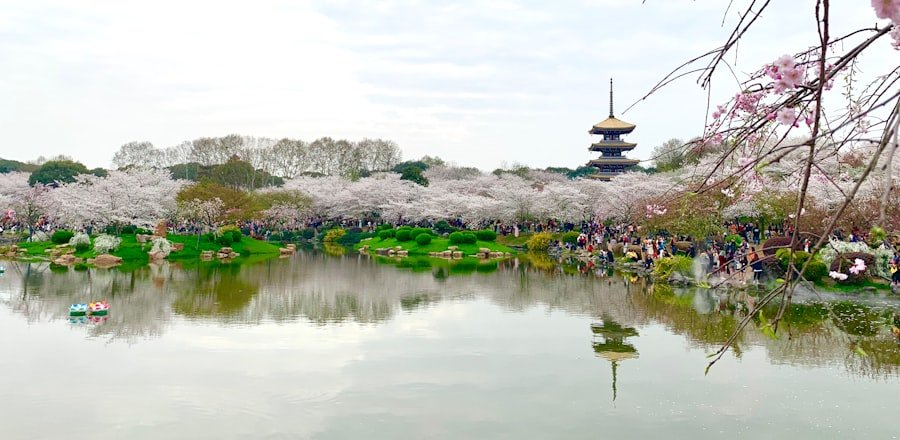

Describing Taste in Mandarin: The Difference Between Hǎochī and Hǎohē
The art of describing taste is an essential aspect of any language, and Mandarin Chinese is no exception. In a culture where food plays a pivotal role in social interactions and daily life, the ability to articulate one’s culinary experiences is invaluable. Mandarin offers a rich vocabulary for expressing taste, with terms that convey not only the flavour but also the emotional connection to food.
Among these terms, “hǎochī” (好吃) and “hǎohē” (好喝) stand out as fundamental expressions that encapsulate the essence of deliciousness in both solid and liquid forms. Understanding these terms is crucial for anyone looking to navigate the vibrant world of Chinese cuisine and engage meaningfully in conversations about food. As we delve into the nuances of these expressions, we will explore their meanings, cultural significance, and practical applications in everyday conversations.
This exploration will not only enhance your Mandarin vocabulary but also deepen your appreciation for the culinary traditions that shape Chinese society. Whether you are a language learner or a food enthusiast, grasping the subtleties of “hǎochī” and “hǎohē” will enrich your understanding of Mandarin and its connection to the delightful world of flavours. Start learning Chinese at the NLS Norwegian Language School in Oslo now!
Table of Contents
ToggleSummary
- Describing taste in Mandarin involves the concepts of Hǎochī and Hǎohē, which represent delicious and refreshing flavours respectively.
- Hǎochī refers to the enjoyment of rich, savoury, and satisfying foods, while Hǎohē represents light, fresh, and invigorating flavours.
- It is important to differentiate between Hǎochī and Hǎohē when describing food, as they convey different sensory experiences and preferences.
- Examples of Hǎochī foods and flavours include Peking duck and spicy Sichuan cuisine, while Hǎohē foods and flavours include fresh seafood and delicate herbal soups.
- Hǎochī and Hǎohē hold cultural significance in Mandarin cuisine, reflecting the diversity and depth of Chinese culinary traditions.
Understanding the Concept of Hǎochī
The term “hǎochī” translates directly to “delicious” or “tasty” in English, but its implications extend far beyond mere flavour. In Mandarin, “hǎochī” embodies a sense of satisfaction and pleasure derived from eating. It is often used to describe foods that evoke positive emotions, memories, or cultural significance.
For instance, a home-cooked meal prepared by a loved one may be described as “hǎochī,” not only for its taste but also for the warmth and care that went into its preparation. This emotional layer adds depth to the term, making it a powerful descriptor in conversations about food. Moreover, “hǎochī” can be applied to a wide range of dishes, from street food to gourmet cuisine.
It is a versatile term that can be used in various contexts, whether one is enjoying a simple bowl of noodles or indulging in an elaborate banquet. The ability to express enjoyment through “hǎochī” allows speakers to connect with others over shared culinary experiences, fostering a sense of community and belonging. As we continue our exploration, we will see how this term plays a vital role in the appreciation of Chinese gastronomy.
Exploring the Meaning of Hǎohē

In contrast to “hǎochī,” which pertains specifically to solid foods, “hǎohē” refers to beverages and translates to “delicious to drink.” This term encompasses a wide array of liquids, including teas, juices, wines, and other drinks that provide a pleasurable tasting experience. Just as with “hǎochī,” the use of “hǎohē” conveys not only the flavour but also the enjoyment associated with drinking. For example, a refreshing cup of jasmine tea on a hot day might be described as “hǎohē,” highlighting both its taste and the comfort it brings.
The concept of “hǎohē” is particularly significant in Chinese culture, where tea drinking is an integral part of social rituals and gatherings. The act of sharing a drink often serves as a means of hospitality and connection among friends and family. Thus, when one describes a beverage as “hǎohē,” it signifies more than just a pleasant taste; it reflects the cultural importance of sharing moments over drinks.
As we further investigate this term, we will uncover its role in enhancing social interactions and enriching culinary experiences.
Differentiating Between Hǎochī and Hǎohē
While both “hǎochī” and “hǎohē” convey enjoyment related to food and drink, their applications are distinct and context-dependent. Understanding when to use each term is crucial for effective communication in Mandarin. “Hǎochī” is reserved for solid foods, encompassing everything from snacks to full meals.
It captures the essence of flavour, texture, and overall satisfaction derived from eating. On the other hand, “hǎohē” is exclusively used for liquids, focusing on the sensory experience associated with drinking. This differentiation is essential for learners of Mandarin, as using one term in place of the other can lead to confusion or miscommunication.
For instance, describing a dish as “hǎohē” would not only be incorrect but could also elicit puzzled reactions from native speakers. By mastering the appropriate contexts for each term, learners can enhance their conversational skills and engage more meaningfully with others about their culinary preferences.
Examples of Hǎochī Foods and Flavours
To illustrate the concept of “hǎochī,” one can consider a variety of traditional Chinese dishes that exemplify this term’s richness. For instance, Peking duck is often hailed as “hǎochī” due to its crispy skin and succulent meat, which create a delightful contrast in texture and flavour. Similarly, dumplings filled with seasoned pork or vegetables are frequently described as “hǎochī,” as they offer a satisfying bite that resonates with many palates.
Moreover, regional variations in Chinese cuisine provide an abundance of examples that can be classified as “hǎochī.” Sichuan hotpot, known for its bold spices and aromatic broth, is another dish that elicits enthusiastic responses from diners who appreciate its complex flavours. The diversity within Chinese gastronomy ensures that there is no shortage of foods that can be celebrated as “hǎochī,” making it an essential term for anyone looking to discuss their culinary experiences in Mandarin.
Examples of Hǎohē Foods and Flavours

When it comes to beverages, there are numerous examples that embody the essence of “hǎohē.” One cannot overlook the significance of tea in Chinese culture; varieties such as oolong tea or pu-erh tea are often described as “hǎohē” due to their rich flavours and aromatic qualities. The experience of sipping on these teas can evoke feelings of relaxation and contentment, making them ideal candidates for this term. In addition to tea, fruit juices and traditional drinks like soy milk also fall under the category of “hǎohē.” A refreshing glass of freshly squeezed orange juice on a warm day can be described as “hǎohē,” highlighting its thirst-quenching properties alongside its delightful taste.
Similarly, bubble tea has gained immense popularity worldwide and is frequently labelled as “hǎohē,” thanks to its unique combination of flavours and textures that appeal to many young people today.
Cultural Significance of Hǎochī and Hǎohē in Mandarin Cuisine
The terms “hǎochī” and “hǎohē” are not merely descriptors; they encapsulate the cultural significance of food and drink within Mandarin-speaking communities. In Chinese culture, meals are often seen as communal experiences that foster connections among family members and friends. The act of sharing food—whether it be through a banquet or a simple meal at home—reinforces social bonds and creates lasting memories.
Furthermore, the appreciation for flavours expressed through “hǎochī” and “hǎohē” reflects a deep-rooted respect for culinary traditions that have been passed down through generations. Each dish or beverage carries with it stories of heritage, regional ingredients, and cooking techniques that contribute to its unique taste profile. By using these terms in conversation, speakers not only express their personal preferences but also honour the rich tapestry of Chinese gastronomy.
Expressing Preferences Using Hǎochī and Hǎohē
When discussing personal preferences regarding food and drink in Mandarin, incorporating “hǎochī” and “hǎohē” can add depth to your expressions. For instance, one might say, “这道菜真好吃” (zhè dào cài zhēn hǎochī), meaning “This dish is really delicious,” to convey enthusiasm about a particular meal. Similarly, when referring to beverages, one could express their enjoyment by stating “这杯茶好喝极了” (zhè bēi chá hǎohē jí le), which translates to “This cup of tea is extremely delicious.” These expressions not only communicate personal tastes but also invite further conversation about culinary experiences.
By sharing what you find “hǎochī” or “hǎohē,” you encourage others to share their own preferences or recommendations, fostering an engaging dialogue centred around food and drink.
Using Hǎochī and Hǎohē in Everyday Conversations
In everyday conversations among Mandarin speakers, the terms “hǎochī” and “hǎohē” frequently arise when discussing meals or outings at restaurants. For example, after enjoying a meal at a local eatery, one might comment on how “这家餐厅的菜都很好吃” (zhè jiā cāntīng de cài dōu hěn hǎochī), meaning “The dishes at this restaurant are all very delicious.” Such remarks not only express satisfaction but also serve as recommendations for others who may be seeking dining options. Additionally, when attending social gatherings or celebrations where drinks are served, participants often use “hǎohē” to describe their favourite beverages.
A toast might include phrases like “这酒真好喝” (zhè jiǔ zhēn hǎohē), meaning “This wine is really delicious,” which enhances the convivial atmosphere while acknowledging the quality of what is being enjoyed.
Common Mistakes in Using Hǎochī and Hǎohē
Despite their straightforward meanings, learners of Mandarin often make common mistakes when using “hǎochī” and “hǎohē.” One frequent error involves confusing the two terms; for instance, describing a dish as “hǎohē” instead of “hǎochī.” Such mistakes can lead to misunderstandings or humorous situations where speakers may inadvertently convey incorrect sentiments about their culinary experiences. Another common pitfall is using these terms too broadly without considering context. While it may be tempting to label all foods as “hǎochī” or all drinks as “hǎohē,” doing so may dilute the richness of expression available in Mandarin.
It is essential for learners to practice using these terms thoughtfully and accurately to convey genuine appreciation for the diverse flavours found within Chinese cuisine.
Conclusion and Summary of Describing Taste in Mandarin
In conclusion, understanding how to describe taste in Mandarin through terms like “hǎochī” and “hǎohē” opens up new avenues for communication and cultural appreciation. These expressions encapsulate not only the flavours associated with food and drink but also the emotional connections tied to culinary experiences within Chinese society. By mastering their usage, learners can engage more meaningfully in conversations about cuisine while celebrating the rich traditions that shape Chinese gastronomy.
As you continue your journey in learning Mandarin, consider exploring courses that delve deeper into these cultural nuances—such as those offered at NLS Norwegian Language School in Oslo. Their Chinese courses provide an excellent opportunity to enhance your language skills while immersing yourself in the fascinating world of Chinese cuisine and culture. Embrace this chance to expand your vocabulary and understanding of taste in Mandarin; it will undoubtedly enrich your culinary adventures ahead!
Register for a Chinese class at the NLS Norwegian Language School now!
If you want to learn Norwegian, you can register for classes here. We look forward to hearing from you and helping you become fluent in Norwegian.





